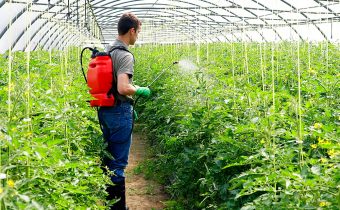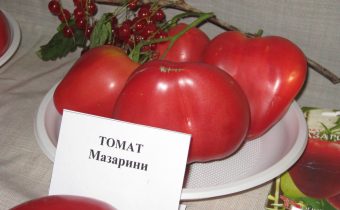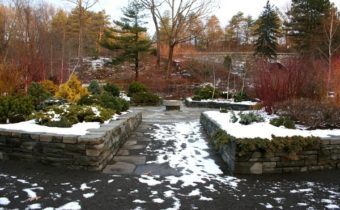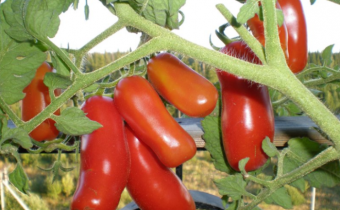Permanent, fenced beds: advantages and disadvantages
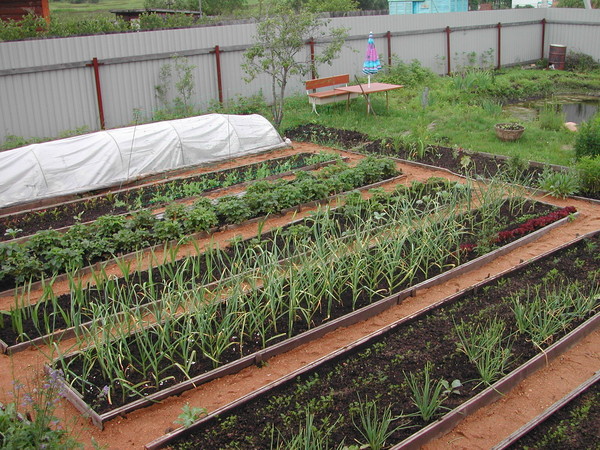
The organization of permanent, fenced and high beds makes the care of crops more comfortable, provides the root system of plants with moisture, nutrients, contributes to obtaining a rich harvest. Planting with sides has its advantages and disadvantages, which should be considered before planting vegetables, flowers, herbs, berries.
Benefits
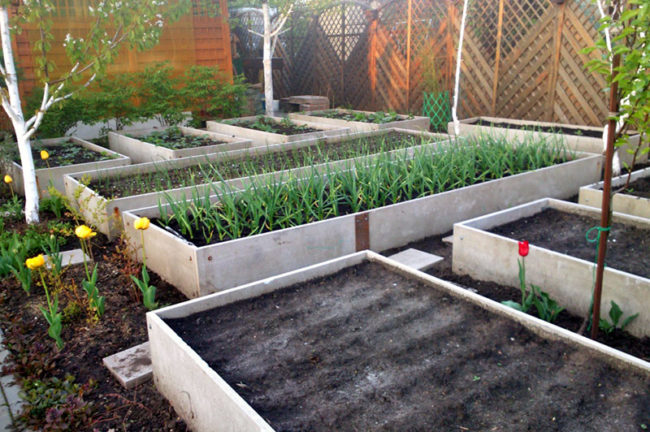
The organization of high ridges is based on the method of Jacob Mitlider - Doctor of Biological Sciences and agronomist, who experimentally established the relationship between the uniform distribution of moisture and nutrients in the fenced raised ridges with the quality of crops, their taste and yield.
Fenced landings are high ridges with sides around the perimeter 20-50 cm high. Summer residents with experience use any available material for the installation of the barrier - boards, slate, metal sheets, fiberboard and chipboard, planed bar, log, polycarbonate. The main purpose of the installation of a low fence is to hold inside the structure of the soil over the substrate-filler (hay, twigs, fir branches, sand, gravel, etc.).
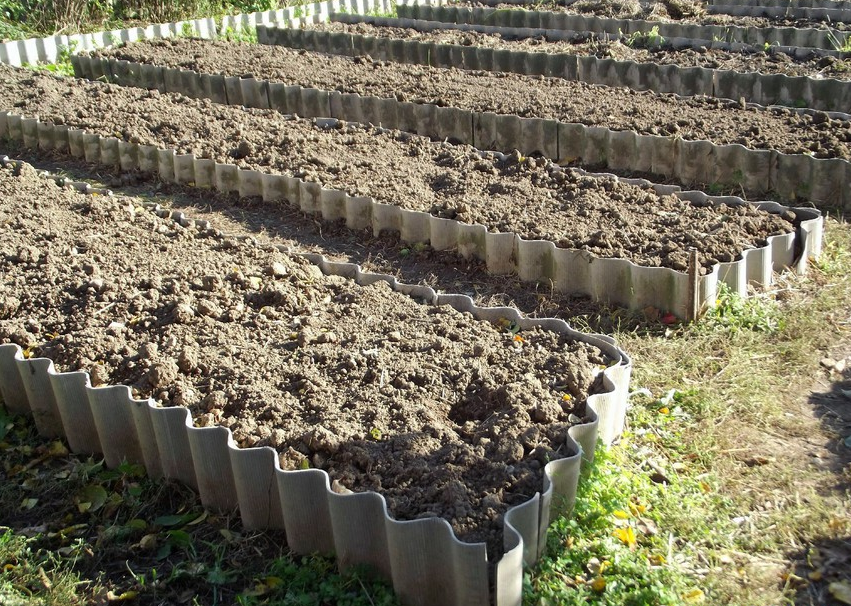
The advantages of raised beds with sides are:
- high yield. In fenced beds, water and nutrients of the dressings are not washed out beyond the fence. Cultivated crops receive full moisture and nutrition;
- rational consumption of water and fertilizing. It is easier to moisten a high ridge with a barrier. Due to the elevated level of the soil substrate, moisture is permanently retained within the layers. Fertilizers applied remain within the perimeter being processed;
- the effectiveness of mulching. Mulch laid in the planting rows or covering the crop from the cold does not move due to gusts of wind, slanting rains, remains within the barrier;
- reduction of digging and cultivated area. The gardener does not spend efforts on digging the whole garden. It is enough to dig up only the high ridges, enclosed by boards;
- natural ground drainage. Abundant rainfall will not cause rotting of the root system of the planted crops, since excess water will quickly go to the lower layers and the draining substrate;
- optimal warming of the soil and growing crops. Planting, raised above the general level of the garden, is better illuminated by sunlight;
- the organization of the garden even on unsuitable soils and difficult terrain. You can equip high fenced landings on rocky rocks, flooded soil, on inclined surfaces. Mount the box, arrange the backing and fill the construction with fertile soil mixture;
- ease of care for plantings. The location of crops on high ridges makes weeding, processing, loosening more comfortable. The gardener is not required to bend low and for a long time to be in a forced uncomfortable position. If the space between the squads allows, it is possible to put a small chair from which it is easy to produce any kind of event
- exceptions to penetration of weed planting and pests. The obstacle in the form of bumps serves to protect the growth of weeds among garden crops and the movement of insects and larvae from the garden paths;
- protection of planted plants covering material.Cover the landings with polyethylene or spunbond over the sides in freezing, hail, during strong winds or slanting rains. After planting seedlings, you can better adapt the crop, creating a greenhouse effect, gradually accustoming young plants to new conditions;
- simplicity of registration of country paths. You can easily organize a practical garden path among the built boxes with plants. Cover it with a layer of wood shavings, hay, sand, brick chips, stones, or lay the boards, bricks, paving slabs;
- aesthetic look. The correct geometric shape of the ridges creates order in the garden. Reliably mounted structures are not destroyed for a long time. Paint or decorate the outer surface in the same style as the dacha.
When organizing a fenced high ridge, locate it to the south so that the cultures are evenly illuminated by solar ultraviolet during the day.
High ridges with sides are a convenient device for crop production. The design not only promotes the active growth of crops without competition with weeds for light, moisture and nutrients, but also facilitates the summer resident.
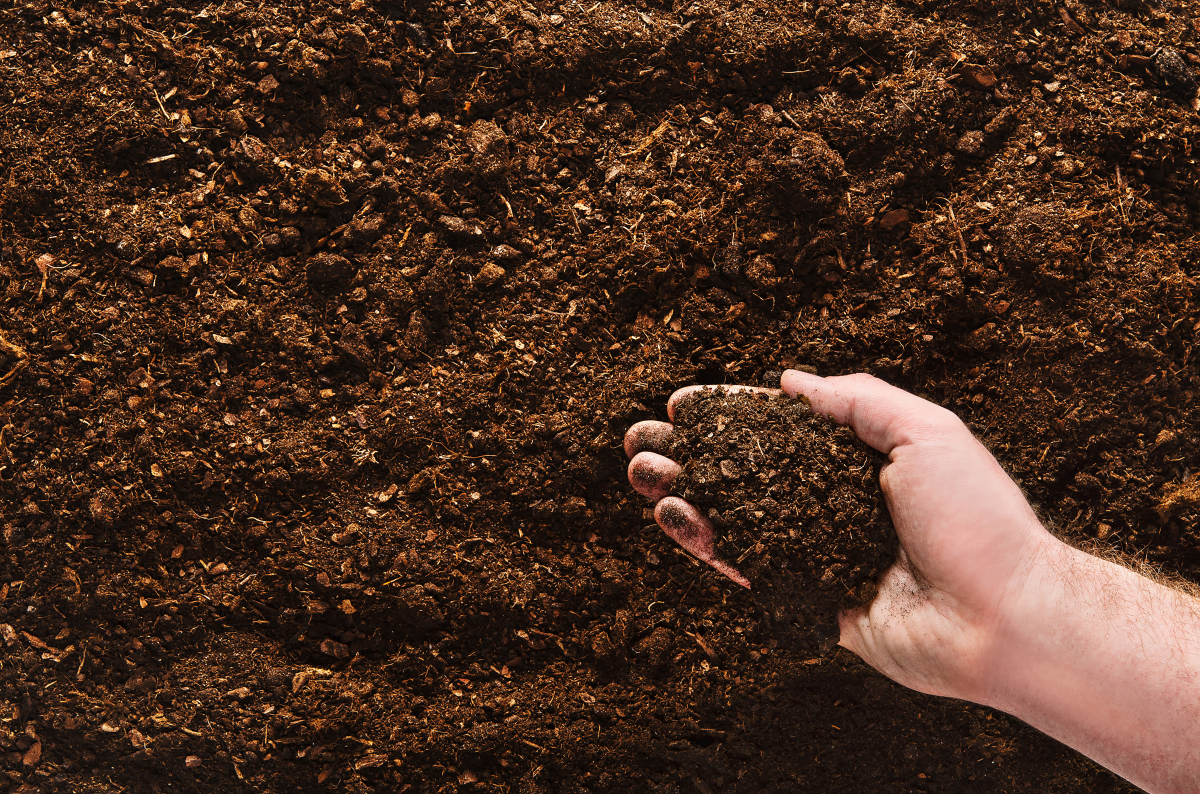
Disadvantages of fenced raised beds

Ridges with a barrier, built on a summer residence, have a number of inconveniences. The main drawback is the need to make an effort, spend time, find materials, think through a competent design and location.
Other drawbacks of permanent raised landings with sides are:
- high evaporation. Spilled topsoil in bright sunlight due to the height loses moisture faster. Organize drip irrigation or irrigation so that the water has time to penetrate the lower layers. Laying mulch between the rows will also help retain moisture in the soil substrate;
- forced density of crops and competent organization of sowing. Continuous sowing will eliminate the appearance of weeds between crops;
- frequent fertilization. In the limited space of the culture, the soil substrate is quickly depleted, so organic and mineral supplements must be regularly introduced. Write down a detailed plan for feeding vegetables, flowers, greens using nutritious teas, ready-made formulations, organic matter;
- high risk of disease of all plants. In case of spore, fungus, disease of seedlings on one segment of the ridge, the entire planting is affected during a quick time. Regularly inspect the soil and growing bushes in time to remove the diseased seedling and located nearby;
- manual labor when digging fenced plantations;
- the difficulty of digging near the sides. During the autumn and spring digging of the ridges, it is difficult to raise the soil substrate near the fence with a bayonet spade. Local tillage with small garden tools (shovel, chopper) around the perimeter can be a way out;
- selection of certain crops that can be grown on raised ridges. Cold-loving plants and seedlings, poorly tolerant of bright light and overheating of the soil, will not give a rich harvest. For example, high plantings are not suitable for cultivation of garlic, spinach. Their resources will be directed to the development of green parts, and not to the formation of new shares.
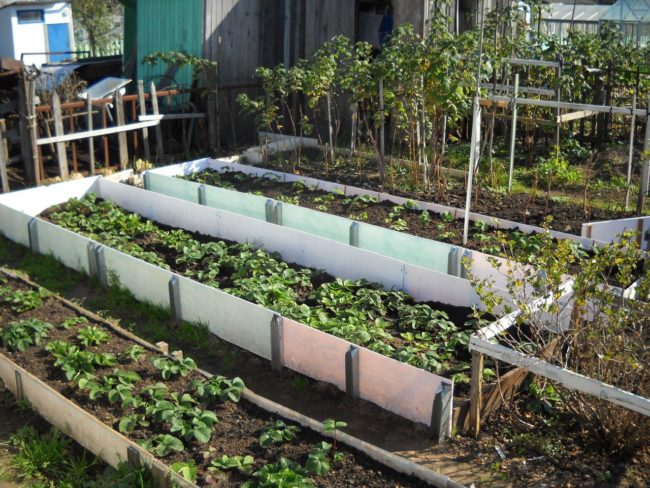
With a competent approach to the organization of permanent high beds, flaws can be easily eliminated. The advantages of plant growing on fenced plantations are greater than the negative sides. With timely repair and maintenance of the design will last at least 10-15 years.

Cultivation of garden and garden crops in permanent, fenced and high beds simplifies the care of plants, provides planted seedlings with good nutrition, protection from weeds, pests. In a well-constructed structure, you can grow most vegetables, herbs, berries, flowers. Durable materials for the sides will be the key to long life of the raised landing.


